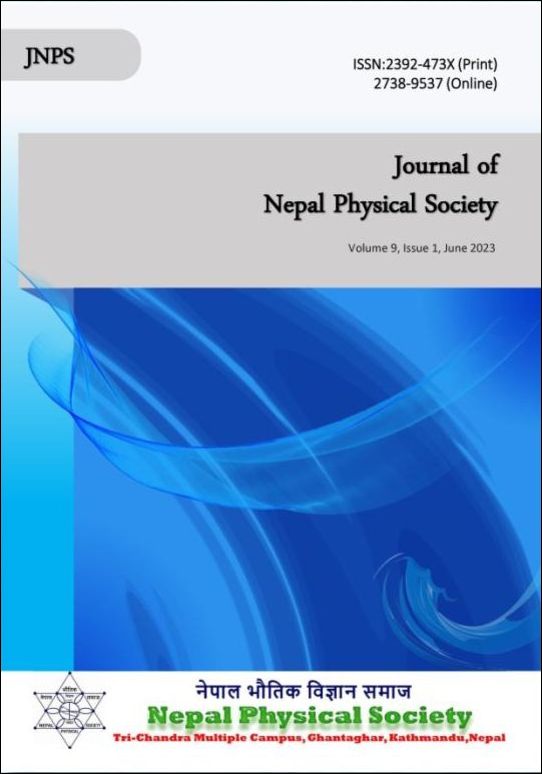Star Formation Rate of Eight Nearby Dwarf Galaxies within 85 Mpc Distance
DOI:
https://doi.org/10.3126/jnphyssoc.v9i1.57749Keywords:
Dwarf galaxy,, Emission line, Line metallicity, Star formation history, Star formation rateAbstract
This study examines the star formation rates (SFR) of eight dwarf galaxies, namely IC 700, MRK 0225, NGC 3440, NGC 5089, PGC 026162, PGC 051103, UM 158, and UM 454. The SFR estimators include the luminosities of the H alpha and [OII] emission lines, as well as the ultraviolet continuum. The data is obtained from GALEX and SDSS spectral observations. Of the eight galaxies, seven are classified as starburst dwarfs, while PGC 026162 is identified as a Seyfert galaxy. The highest H alpha SFR is observed in MRK 0225, measuring 0.30466 solar masses per year, whereas IC 0700 exhibits the lowest value of 0.00096 without accounting for extinction. However, upon correcting for extinction, the values become 0.84543 and 0.00177, respectively. In terms of OII SFR, MRK 0225 demonstrates the highest value of 0.32111, while IC 0700 displays the lowest at 0.00232. Additionally, MRK 0225 also exhibits the highest NUV SFR with a value of 0.19725, whereas IC 0700 shows the lowest NUV SFR at 0.06462. Upon applying the extinction correction, these values become 0.47936 and 0.10162, respectively. Analysis reveals that MRK 0225 and UM 158 have experienced recent increases in SFR, indicating a significant presence of newly formed stars. Conversely, UM 454 has maintained a relatively constant SFR for approximately 100 million years. Finally, NGC 3440, IC 700, NGC 5089, and PGC 051103 demonstrate a recent decline in SFR, suggesting a depletion of gaseous content available for star formation. The study also examines the line metallicity by assessing the ratio of NII to H alpha, identifying two galaxies, UM 158 and UM 454, with notably low line metallicity values of 8.11 and 8.13, respectively. Our samples also reveal a consistent trend: galaxies located at greater distances exhibit a notably higher rate of star formation. Overall, the findings indicate that these dwarf galaxies align with the trends observed in local-volume, star-forming galaxies.
Downloads
Downloads
Published
How to Cite
Issue
Section
License
All right reserved. No part of this Journal may be reproduced in any form or by any electronic or mechanical means, including information storage and retrieval system, without permission in writing from the publisher, except by a reviewer who may quote brief passage in a review. The views and interpretation in this journal are those of author(s) and they are not attributable to the NPS.




